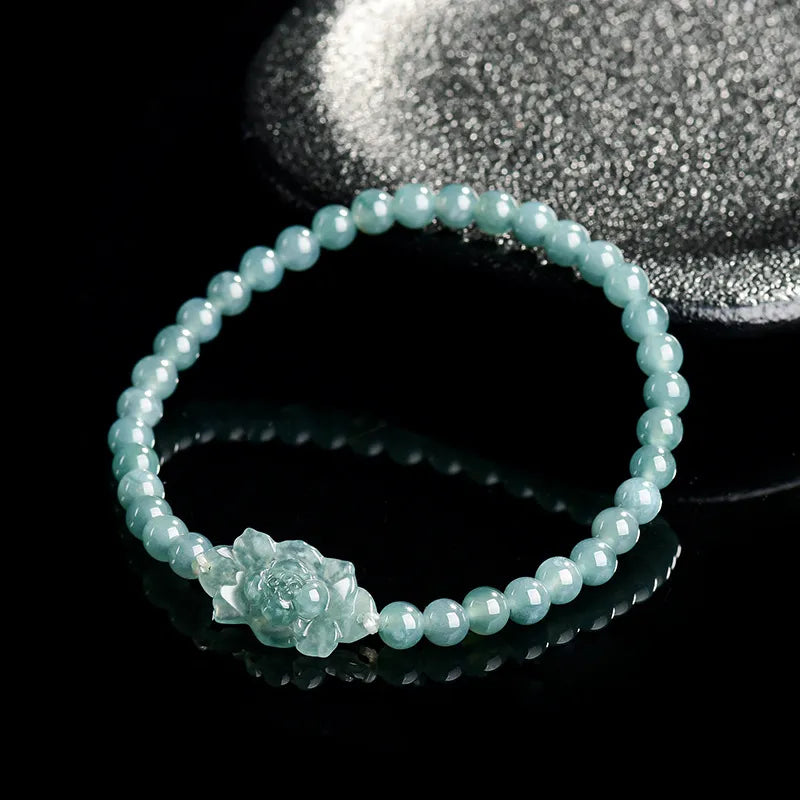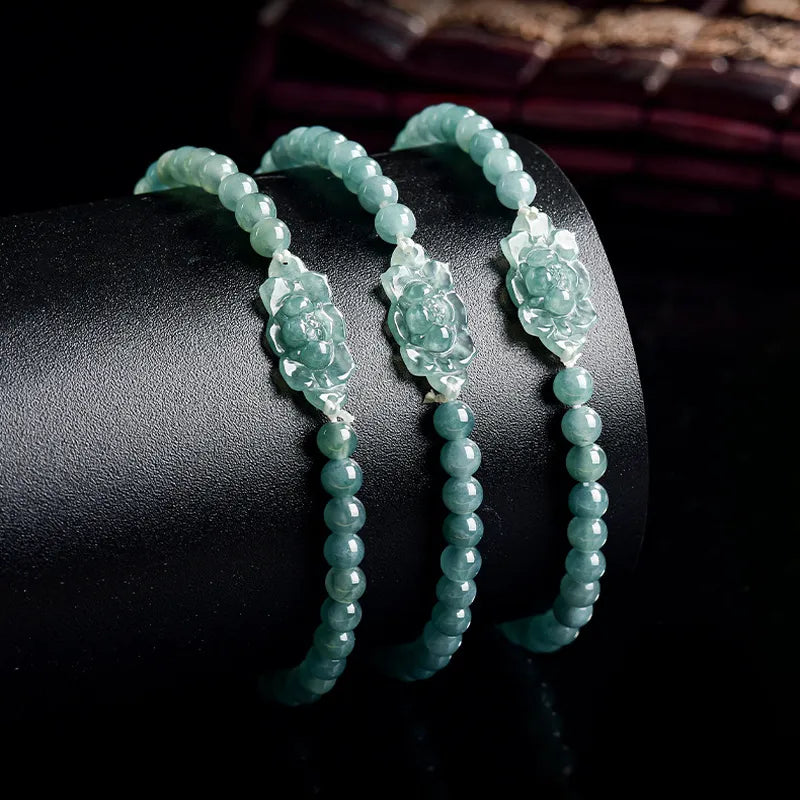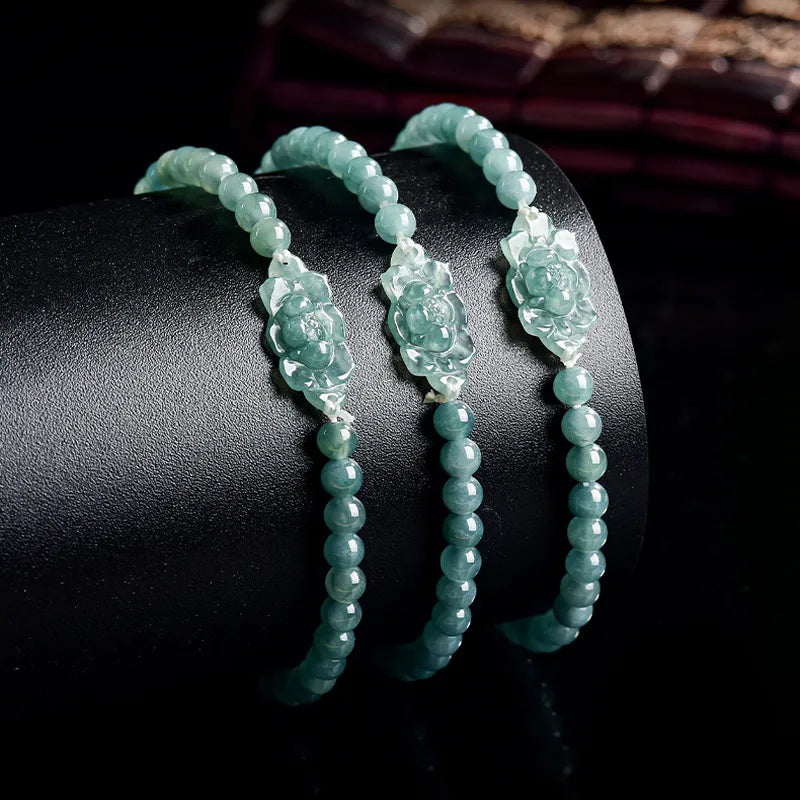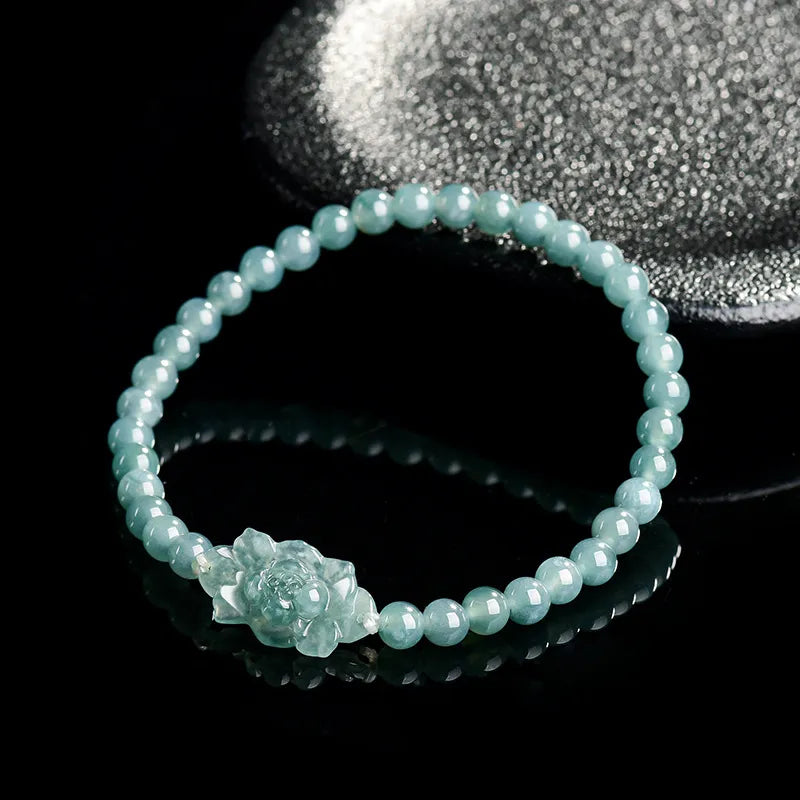The Symbolic Meanings and Cultural Significance of Jade Bangles: A Deep Dive
Jade bangles have been cherished across cultures for centuries, transcending mere ornamentation to embody profound spiritual, emotional, and social meanings. Their circular shape, smooth texture, and enduring materiality make them powerful symbols in both personal and collective contexts. Here’s an exploration of the rich layers of symbolism attached to these timeless pieces.
Symbolism of Protection and Good Fortune
In many Asian cultures, jade is regarded as a talisman against misfortune and a conduit for positive energy. The belief stems from ancient traditions where jade was buried with royalty to safeguard their spirits in the afterlife. Today, wearing a jade bangle is seen as a way to invite blessings and ward off negative influences.

Historical Roots of Protection
Ancient Chinese texts often reference jade as the “stone of heaven,” believed to possess divine qualities. Emperors and nobles adorned themselves with jade ornaments, including bangles, to symbolize their connection to celestial forces. This practice extended to commoners, who gifted jade bangles to newborns as a lifelong shield against harm. The circular form of the bangle, without beginning or end, further reinforces its role as a protective barrier, encircling the wearer with an invisible aura of safety.
Modern Interpretations of Luck
Even in contemporary times, jade bangles are popular gifts for milestones like weddings, births, or career advancements. Parents often pass down heirloom bangles to their children, embedding generations of goodwill into the stone. Some believe that the bangle’s color—ranging from translucent white to deep emerald—influences its protective powers. For instance, lighter shades are thought to attract purity and clarity, while darker hues ward off envy and malice.
Representation of Harmony and Balance
Jade’s smooth, unbroken surface and symmetrical design align with philosophical concepts of balance and unity. In Eastern philosophies, jade embodies the principle of yin and yang, representing the harmony between opposing forces.
Connection to Nature and Elements
Jade’s formation deep within the earth links it to natural cycles of growth and transformation. Its cool, soothing texture is said to calm the mind, much like the tranquility of a flowing river. Wearing a jade bangle is believed to align the wearer’s energy with the rhythms of nature, promoting inner peace. This symbolism is particularly strong in Taoist traditions, where jade is associated with the element of water—a symbol of adaptability and resilience.
Emotional and Spiritual Equilibrium
Beyond its physical properties, jade is thought to balance emotions. Its presence is said to soothe anxiety, foster patience, and encourage clear thinking. Some wearers describe a sense of grounding when wearing a jade bangle, attributing it to the stone’s ability to absorb and neutralize negative emotions. This makes it a popular choice for those seeking emotional stability during times of stress or change.
Significance in Relationships and Commitment
Jade bangles often play central roles in rituals of love, friendship, and familial bonds. Their durability and timeless beauty make them ideal symbols of enduring connections.
Romantic Partnerships
In many cultures, exchanging jade bangles is a gesture of lifelong commitment. Couples may engrave their names or meaningful dates inside the bangle as a private token of love. The circular shape symbolizes eternity, reflecting the hope for a relationship that lasts beyond time. Unlike fleeting gifts, a jade bangle represents a promise to nurture and protect the bond, much like the stone itself withstands the test of time.
Familial and Generational Ties
Jade bangles are frequently passed down through generations, becoming family heirlooms loaded with stories and memories. A mother might give her daughter a bangle worn during her own wedding, creating a tangible link between past and present. This tradition underscores the value of continuity and the importance of preserving cultural heritage. The bangle’s ability to remain unchanged despite decades of wear mirrors the enduring nature of familial love.
Friendship and Loyalty
Among friends, gifting a jade bangle signifies trust and loyalty. The act of choosing a bangle—carefully considering its color, size, and craftsmanship—reflects the giver’s thoughtfulness. Recipients often wear these bangles as reminders of the bond they share, even when physically apart. In some circles, matching jade bangles are worn by close friends as a symbol of solidarity, much like friendship bracelets in Western cultures.
Cultural Identity and Heritage
Jade bangles are deeply woven into the cultural fabric of societies like China, Myanmar, and New Zealand (where Māori carve jade into symbolic ornaments). They serve as markers of identity, reflecting both personal and collective histories.
National Pride and Artistry
In countries like China, jade carving is a revered art form passed down through master-apprentice relationships. The craftsmanship involved in shaping a bangle—from selecting the raw stone to polishing its surface—celebrates human ingenuity and patience. Wearing a locally crafted jade bangle is often seen as a way to honor cultural heritage and support traditional artisans.
Rituals and Ceremonies
Jade bangles feature prominently in ceremonies such as weddings, coming-of-age rituals, and funerals. In Chinese weddings, for example, the bride might wear a red-threaded jade bangle to symbolize prosperity and fertility. During funerals, jade is sometimes placed with the deceased as a symbol of eternal life. These practices highlight jade’s role as a bridge between the mortal world and the spiritual realm.
Global Appreciation
While rooted in specific cultures, jade’s symbolism has transcended borders. Today, people from diverse backgrounds wear jade bangles, drawn to their aesthetic appeal and universal themes of protection, love, and balance. This cross-cultural adoption reflects jade’s ability to resonate with fundamental human desires, regardless of origin.
Final Perspectives
The symbolism of jade bangles is as multifaceted as the stone itself. From ancient talismans to modern heirlooms, they carry layers of meaning that evolve with each wearer. Whether worn for protection, love, or cultural pride, a jade bangle is more than jewelry—it’s a living narrative etched in stone.




